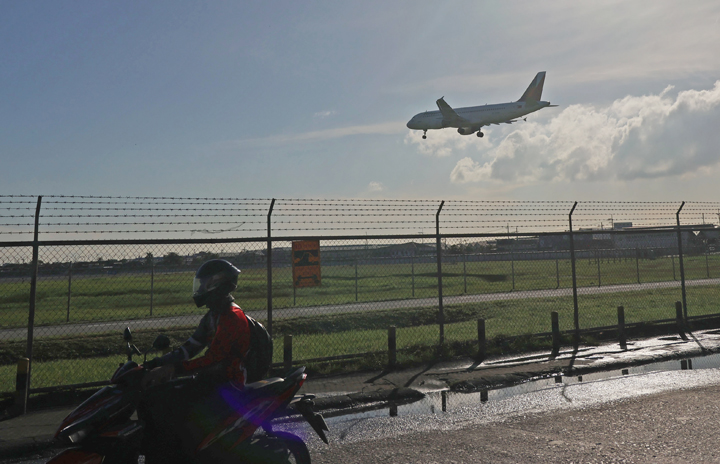
THE Philippines received 2.65 million foreign tourists from February to December 31, 2022, exceeding the 2-millon low-end target of the Department of Tourism (DOT) under its reformulated tourism plan for the last two years of the Duterte administration.
In a news statement, the DOT also said the Philippines earned US$3.68 billion (P209 billion) in foreign visitor receipts since the country reopened to international travelers on February 10. This also exceeded the low-end inbound revenue target of P83 billion, and was just 11 percent off the high-end target of P231 billion, under the reformulated
National Tourism Development Plan (NTDP) for 2021-2022. Both visitor arrivals and receipts were still lower than the prepandemic levels of 8.26 million foreign tourists and $9.3-billion (P521 billion) inbound revenue in 2019.
Bold prediction
In her year-end briefing, Tourism Secretary Christina Garcia Frasco boldly predicted a rise in international tourists to 4.8 million in 2023. The DOT, however, has yet to finalize the NTDP for 2022-2028.
Of the total visitor arrivals last year, 628,445 were overseas Filipinos, while foreigners reached some 2.03 million. The DOT issued its news statement at 11:26 pm on Monday, just as the government regained full control of its air traffic management system. Transportation Secretary Jaime J. Bautista said in a news briefing late Monday, some 65,000 passengers were affected by the system glitch caused first by a power outage, then a power surge.
‘Anywhere except the Philippines’
Miggy (not her real name) was traveling back to Manila from Singapore on Monday morning, but was stuck in the city-state due to the system shutdown in Manila. She was supposed to be on the same flight with several foreigners who were headed to Boracay Island. “But when it [system shutdown] happened, they rebooked to ‘anywhere except the Philippines.’” Miggy used Singapore Airlines for her outbound and inbound flights from and to Manila, so their flights were just merely rescheduled, while local carriers like Philippine Airlines (PAL) and Cebu Pacific cancelled their
flights on Monday.
In the case of travel veteran Bob Zozobrado, he said he bought promo economy fare tickets for his six family members through a travel agency, for a Cebu-Manila flight on Monday. “But the travel agency [told] me I have to pay P9,000-plus, if I want to be confirmed on the 5:45 a.m. flight on Wednesday. The airline said the promo rate allocation is full so if I want confirmation, I should pay the higher fare. Why won’t the airline accomodate all those ticketed on the promo fares? It’s not our fault that the flight was cancelled. I find that unfair.”
However, PAL spokesperson Cielo Villaluna told the BusinessMirror that in the case of force majeur when neither the passenger nor the airline is at fault for the flight cancellation, “passengers don’t have to pay a rebooking fee nor a fare difference, not unless they will rebook in a different cabin class, say from economy to business class. Even travel agencies are covered by this rule.”
Frasco, for her part, said its ground personnel were activated as soon as the air traffic problem manifested. “DOT staff stationed at the airports continue to provide information and assistance to tourists. At the same time, tourists are also advised to constantly monitor updates primarily on their flight schedules through the official social media platforms and websites of the Department of Transportation and airlines.”
US, SoKor still top markets
The agency, she added, had been in “close coordination” with relevant government offices and stakeholders “monitoring the situation of tourists across the country , who were affected by flight diversions, delays, or
cancellations.”
Meanwhile, DOT data showed the top source markets for tourists last year were: the United States (505,089); South Korea (428,014); Australia (137,974); Canada (121,413); the United Kingdom (101,034); Japan (99,557); Singapore (53,448); India (51,542); Malaysia (46,805); and China (39,627). A government source explained, while outbound leisure travel has been mostly prohibited by Beijing except to Macau or Hong Kong, Chinese arrivals in the Philippines last year may have received special permits to travel.
An estimated 5.23 million tourism-related jobs were generated last year, while11,989 tourism enterprises were accredited by the DOT as of December 29, 2022. A total of 25,770 tourism stakeholders have also been trained.
Image credits: Nonie Reyes
